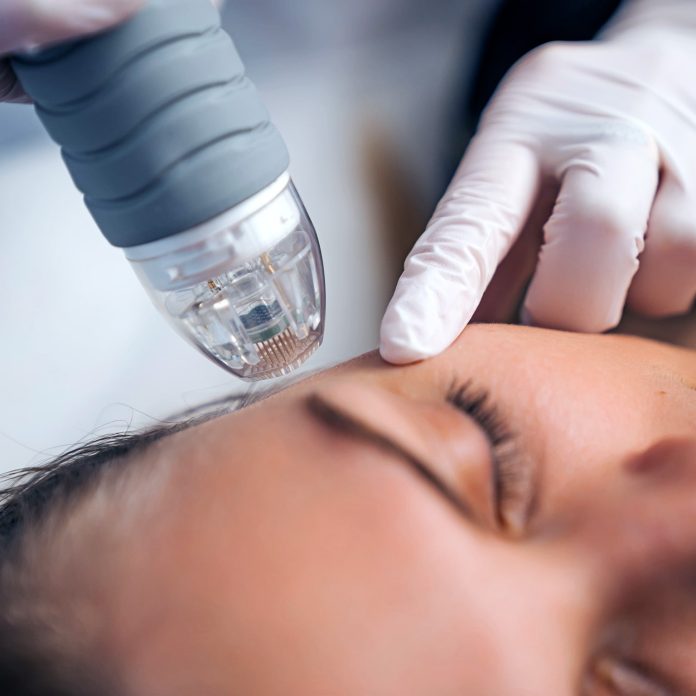The Impact of GLP-1 Agonists on the Aesthetics Industry
The rapid adoption of glucagon-like peptide-1 (GLP-1) agonists is changing the life sciences landscape, with ripple effects extending well beyond cardiometabolic and obesity care. Global prescriptions of GLP-1 agonist therapies grew at a remarkable rate of roughly 38 percent annually between 2022 and 2024—sales are forecast to reach $100 billion by 2030. This growth has prompted interest in the downstream effects across healthcare and life sciences. In the medical aesthetics sector, the impact is already being felt. These medications are not only changing patients’ cardiometabolic health; they are also altering their appearance and, in turn, fueling demand for aesthetic products and services.
Survey Findings
To better understand the impact of GLP-1-induced weight loss on the aesthetics industry and on facial aesthetics specifically, we surveyed 174 medical spas, dermatology and plastic surgery clinics, and other aesthetics providers at the end of 2024. Our findings suggest that GLP-1 therapies are expanding and reshaping the aesthetics customer base. For example, 63 percent of patients seeking facial aesthetic products or procedures were not active users of medical aesthetics services. Roughly half of these patients had never considered aesthetics prior to their weight loss. The rest of them were converted fence-sitters—people who had indicated their intention to receive an aesthetics treatment within the next five years.
Characteristics of GLP-1 Patients
- Many GLP-1 patients have multiple aesthetic concerns.
- GLP-1 patients have diverging aesthetic objectives.
- Combination therapies and novel technologies may be required to fully address the range of needs of GLP-1 patients.
- The financial outlook for GLP-1 patients seeking aesthetic treatments is mixed.
Actions for Stakeholders
1. Review marketing, messaging, and patient engagement
The GLP-1 patient cohort includes aesthetics customers who appear to have been previously unreached by traditional aesthetic marketing. This population could be targeted with precision marketing that considers the patient’s demographic and psychographic profiles and their treatment goals.
2. Consider the potential of tiered pricing or subscription models
To serve this financially diverse cohort, aesthetics providers can evolve their approach—blending traditional, high-touch strategies with digitally enabled, consumer-centric models that appeal to newer segments and foster long-term loyalty.
3. Design treatment protocols tailored to post-weight-loss needs
A one-size-fits-all approach does not address the complex medical and aesthetic needs of GLP-1 patients. Aesthetic providers could partner with manufacturers to develop evidence-based algorithms optimized for this population.
4. Expand access to combination therapies and novel technologies
Synergistic interventions may be more appropriate for GLP-1 patients seeking to address multiple aesthetic issues. In response to emerging research on weight-management patients, manufacturers should consider reviewing their R&D efforts and expanding their innovations.
5. Explore investment and dealmaking opportunities across the value chain
The growing need for integrated treatment solutions, scalable care models, and differentiated, evidence-based technologies has created investment opportunities. Investors could engage in strategic M&A to acquire early-stage companies that are developing novel aesthetic tools and combination therapies.
Conclusion
In this pivotal moment, as demand for GLP-1 agonists continues to rise, providers, manufacturers, and investors should seize the opportunity to innovate, adapt, and shape the future of aesthetics. Those that act now—by developing novel and cost-effective treatment plans, investing in next-generation technologies, and creating tailored go-to-market and pricing strategies—can meet current demand and establish leadership in this evolving market.
FAQs
Q: How are GLP-1 agonists impacting the aesthetics industry?
A: GLP-1 agonists are not only changing patients’ cardiometabolic health but also altering their appearance, leading to increased demand for aesthetic products and services.
Q: What actions can stakeholders take to meet the needs of GLP-1 patients?
A: Stakeholders can review marketing strategies, consider tiered pricing models, design tailored treatment protocols, expand access to combination therapies, and explore investment opportunities across the value chain.


